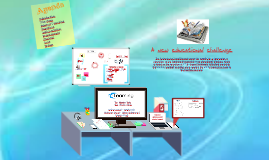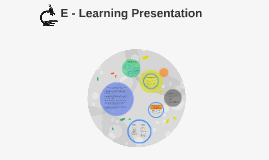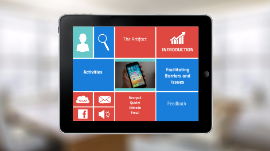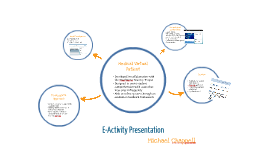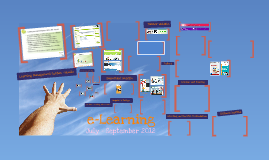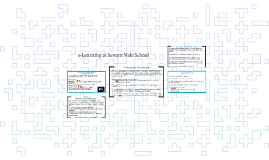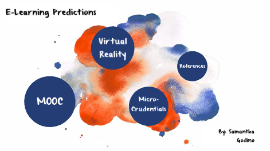E-Learning Presentation
Transcript: E-Learning Predictions By: Samantha Godino MOOCs MOOC MOOC is an acronym that stands for Massive Open Online Courses Define the technology Define or describe in detail the technology Mooc's allow for FREE online courses available for anyone to enroll. This technology allows for the use of traditional course materials such as filmed lectures, course reading, and student interactive courses. It also allows for immediate feedback from professors on questions, quizzes, and assignments. It all started in September of 2002 when MIT (Massachusetts Institute of Technology) created dozens of free MIT courses available online and at free of charge (Rollins, 2018). Current use in education Describe its Current Use for Education People who use this technology usually have at least a bachelor's degree, employed full time, and come from developed countries. According to Harvard Business Review, in 2015 over 25 million people from around the world have enrolled in MOOC's. Some of these platforms are Coursera and EdX (Chen et. al., 2017). According to Harvard Business Review, 52% of people surveyed report a primary goal of improving current jobs or help finding a new job. Some examples of this are getting a raise, finding a new job, starting a new business, etc (Chen et al., 2017). Career Builder As for educational benefits, people want to learn something new! People from developing countries are more likely to be education seekers as are people with lower socioeconomic status (Chen et al., 2017). Educational Benefits There is a very positive future for this technology in education. This technology allows people to learn more information about topics that may interest them. It opens up a new door for free education. Students are able to readily access their grades. Professors are able to give exams that can get results back fast and efficient. Collaboration between peers will also be have a positive impact on this technologies future. Students will be able to work with others in order to expand their knowledge. People are given an opportunity to expand their knowledge or to learn information that they do not already know. This technology will help increase education for all people. The Future of this Technology Virtual Reality (also known as Immersive Multimedia) Virtual Reality Virtual Reality is a computer-simulated environment that can stimulate experiences in the real-world. It can also simulate an imaginary world. It can help recreate sensory experiences, which include virtual taste, sight, smell, sound, and touch. This type of technology can either be displayed on a computer screen or an overhead device that has speakers or headphones (Virtual Reality (VR), n.d.). Define or describe in detail the technology Define the technology One way that virtual reality is being used for education purposes is by allowing for collaboration between peers. Students are able to play against each other using this technology in educational games or activities. In addition to this, game-based learning is a way for children to work collaboratively while also learning. Students are also getting to know how technology is evolving and using their prior knowledge to start using these materials. Currently, this type of technology is being used to encourage students to use this interactive technology (10 Ways Virtual Reality is Already Being Used in Education, 2017). Describe its current use for educational purposes. Current use in education The future of this technology is very bright in education. This type of technology is fun for students and includes activities that will make them want to learn. Virtual reality can bring language immersion into schools. They are able to listen and speak languages that they do not speak everyday. This is also cheaper than going to another country. It can also provide opportunities to go on "virtual field trips" to places that may not be physically available to go to. This type of technology allows for a hands-on approach to education that students are able to use and learn from. If used correctly by teachers, this technology will help increase worldly learning for all. The Future of this Technology Micro-credentials (Badges and certificates) Micro-Crudentials Micro-credentials are digital representations of educational achievements. These represent the completion of requirements set by the organization issuing the credentials. Micro-credentials are awarded for smaller learning or mastery of skills. They are not as large as a diploma but assess smaller educational completions. Many of these credentials are set forth by organizations to increase the knowledge of their workers on certain areas (Micro-credentials, n.d.). Define or describe in detail the technology. Define the Technology Currently in education, micro-credentials are used for credit in specific skills. Many companies will make their workers do these to increase their knowledge in certain skill areas. These can be posted to Linkedin or as part of






